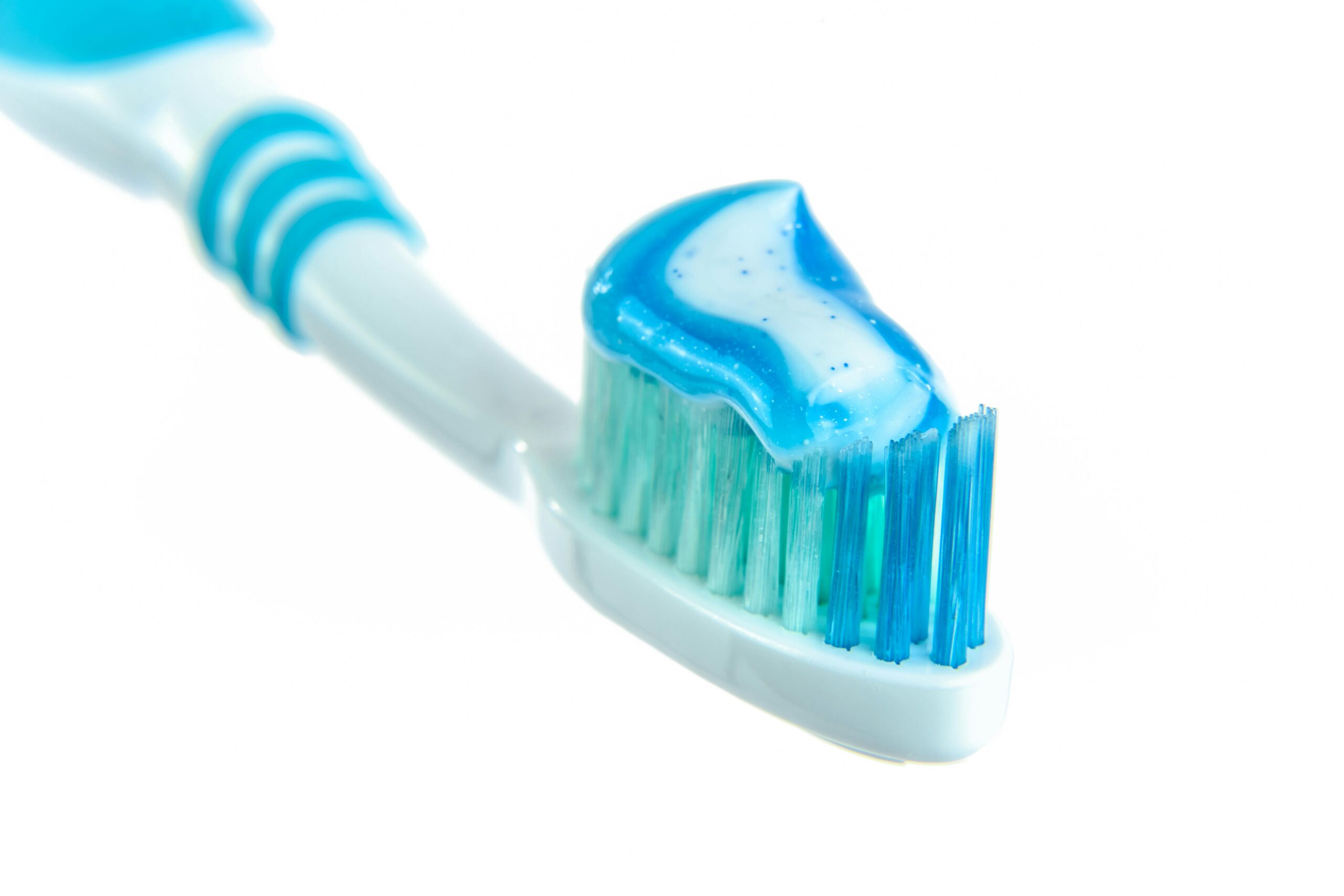Toothpaste is a staple in our daily hygiene routine. But have you ever wondered what’s in toothpaste?
The ingredients in toothpaste are carefully chosen. They work together to clean your teeth and protect your oral health.
Fluoride, a common ingredient, strengthens tooth enamel. It helps prevent tooth decay and cavities.
Abrasives, like calcium carbonate, scrub away plaque and stains. They keep your teeth clean and bright.
But toothpaste isn’t one-size-fits-all. There are many types of toothpaste, each with unique ingredients to address specific dental needs.
Sensitive teeth? There’s a toothpaste for that. Want a brighter smile? Whitening toothpaste can help.
Understanding what’s in your toothpaste can empower you to make informed choices. It can help you find the best toothpaste for your oral health needs.
In this article, we’ll delve into the world of toothpaste ingredients. We’ll explore their functions, the different types of toothpaste, and much more. Let’s get started.
The Importance of Toothpaste in Oral Hygiene
Toothpaste plays a crucial role in maintaining oral health. It helps remove food particles and bacteria that cause plaque. Without toothpaste, brushing would be less effective at cleaning our teeth.
Daily use of toothpaste supports healthy gums and fresh breath. It aids in the prevention of common dental issues. These include cavities, gum disease, and bad breath, contributing to a healthier smile.
The right toothpaste can also enhance the benefits of brushing. By delivering essential ingredients, it supports overall dental care. Choosing the appropriate toothpaste for specific needs is a key step in a comprehensive oral hygiene routine.
Key Ingredients in Toothpaste and Their Functions
Toothpaste is a complex formulation designed to enhance oral hygiene. Each ingredient serves a specific purpose. Understanding these can help you select the best toothpaste for your needs.
A typical toothpaste contains several key components. These include abrasives, fluoride, detergents, humectants, thickeners, and flavourings. Each of these plays an essential role in dental care.
Abrasives, such as calcium carbonate, scrub away plaque and stains. They polish the teeth and help maintain a clean surface. Proper abrasiveness is vital to avoid enamel damage.
Fluoride is another crucial component. It strengthens enamel and fights cavities. This makes it indispensable in most toothpaste formulations.
Detergents create the foam that enhances brushing effectiveness. Sodium lauryl sulphate is a common choice. It works to lift food particles and debris from the teeth.
Humectants like glycerol keep toothpaste from drying out. They maintain the product’s moisture and texture, ensuring smooth application. Thickeners also contribute to the ideal consistency.
Flavouring agents improve the taste, making brushing pleasant. Saccharin and xylitol are commonly used. These do not contribute to tooth decay, unlike sugar.
Preservatives prevent bacterial growth and extend shelf life. They ensure that the product remains safe for use over time.
Many toothpaste brands include additional ingredients for specific benefits. These might target whitening, sensitivity, or gum health. Reading the labels can guide you in choosing the right product.
Fluoride: The Cavity Fighter
Fluoride is well-known for its ability to combat cavities. It strengthens tooth enamel and helps remineralise weak spots. This makes it a powerful ally in preventing tooth decay.
Many dental professionals recommend fluoride toothpaste. It offers proven benefits supported by scientific research. Using fluoride toothpaste regularly can significantly enhance dental health.
Abrasives: Scrubbing Away Plaque and Stains
Abrasives are essential for removing plaque from teeth. They gently polish teeth surfaces without damaging enamel. Common abrasives include silica and calcium carbonate.
The abrasive action helps maintain a bright smile. It prevents the buildup of stains from foods and beverages. These ingredients keep teeth smooth and clean.
Detergents: Foaming for a Deep Clean
Detergents create the familiar foamy effect in toothpaste. They help the toothpaste spread evenly around the mouth. Sodium lauryl sulphate is a common detergent used for this purpose.
The foam produced helps lift debris off the teeth. This allows for a more thorough cleaning process. Effective detergents are key to any comprehensive oral care routine.
Humectants and Thickeners: Consistency and Moisture
Humectants and thickeners play crucial roles in toothpaste formulation. Humectants like glycerol keep the toothpaste moist and usable. They prevent it from drying out in the tube.
Thickeners, such as xanthan gum, give toothpaste its texture. They ensure the product stays on the brush without dripping. Together, these ingredients aid in a satisfying brushing experience.
Specialised Toothpaste Varieties
Toothpaste is not a one-size-fits-all product. Different formulations cater to diverse needs and preferences. Understanding these specialised varieties can help you make an informed choice.
Whitening toothpaste, for example, targets surface stains. It helps users achieve a brighter, whiter smile. Ingredients like hydrogen peroxide or baking soda often serve this purpose.
Individuals with sensitive teeth can benefit from specific toothpaste types. These formulations typically contain agents like potassium nitrate. Such ingredients work by calming the nerve endings in the teeth.
For those concerned with chemicals, natural and organic toothpastes are available. These products feature ingredients like aloe vera or tea tree oil. They focus on providing effective cleaning with minimal artificial substances.
When choosing a toothpaste, consider these specialised formulations. Here are some common types:
- Whitening toothpaste
- Toothpaste for sensitive teeth
- Natural and organic toothpaste
- Toothpaste for children
- Anti-cavity toothpaste
Selecting the appropriate type can improve your oral health experience. It ensures your specific dental needs are addressed effectively.
Whitening Toothpaste: Brightening Your Smile
Whitening toothpastes are popular for enhancing smile aesthetics. They focus on removing surface stains, often caused by food and drinks. Ingredients like baking soda and hydrogen peroxide play crucial roles.
These toothpastes can lead to gradual improvements in tooth colour. Regular use helps maintain whiter teeth. However, excessive use might lead to sensitivity issues.
Toothpaste for Sensitive Teeth: Easing Discomfort
Sensitivity in teeth can cause sharp pain. Specialised toothpaste for sensitivity helps alleviate this discomfort. It often includes potassium nitrate or strontium chloride.
These ingredients work to block pain signals. They soothe the exposed dentin and reduce sensitivity over time. Using them regularly can significantly improve comfort.
Natural and Organic Options: The Eco-Friendly Choice
Natural and organic toothpastes appeal to environmentally conscious consumers. These products exclude synthetic chemicals and focus on natural ingredients. Common components include coconut oil, aloe vera, and neem.
Such toothpastes aim to be eco-friendly and gentle on sensitive users. They’re suitable for those seeking a more natural approach to oral care. Despite their different compositions, they provide effective dental cleaning.
Understanding Toothpaste Labels and Packaging
Navigating toothpaste labels can often be confusing. Understanding what the labels convey is essential for making an informed choice. Labels provide information on ingredients and benefits.
Before selecting a toothpaste, consider these details:
- Active ingredients and their functions
- Expiration date and storage instructions
- Claims like “whitening” or “sensitivity relief”
Examining the packaging can also reveal important information. Many brands feature a color-coded rectangle at the tube’s end. This is part of the manufacturing process, not an ingredient indicator.
Familiarise yourself with the ingredient list to ensure compatibility with personal needs. Consider potential allergens or irritants. An informed choice leads to better oral health management.
Decoding the Ingredients List
The ingredients list is often presented in descending order of weight. This order helps you identify the most prevalent components. Key ingredients like fluoride will typically be near the top.
Pay attention to any unfamiliar terms. Research them to understand their roles. Avoid any known allergens or irritants for your safety.
Potential Allergens and Irritants in Toothpaste
Toothpaste can contain allergens that may cause reactions in sensitive individuals. It’s crucial to be aware of the potential irritants. Common allergens include flavouring agents and preservatives, which enhance shelf life.
Some people experience irritation from ingredients like sodium lauryl sulphate (SLS). This detergent may cause mouth sores in susceptible individuals. It’s often the culprit in cases of canker sores and mouth irritation.
Artificial colours and flavours can also trigger reactions. For those with sensitivities, opting for natural or hypoallergenic toothpaste may reduce the risk. Reading labels carefully is essential to avoiding allergens and ensuring comfort in oral care routines.
The Evolution of Toothpaste: From Ancient Times to Modern Day
The history of toothpaste is long and fascinating. It dates back to ancient civilisations. Egyptians around 5000 BC used a paste made of crushed ox hooves, ashes, and burnt eggshells to clean teeth.
By the 4th century AD, Greeks and Romans improved recipes. They incorporated more abrasives like crushed bones and oyster shells. These early formulations aimed at removing food particles and stains rather than preventing decay.
In the 19th century, modern toothpaste emerged. The first paste was introduced in jars before transitioning to tubes in the 1890s. With the addition of fluoride and refined ingredients, toothpaste advanced significantly in the 20th century. These developments have turned toothpaste into an essential part of daily oral hygiene worldwide.
The Environmental Impact of Toothpaste
Toothpaste has environmental implications that many are unaware of. The packaging, usually made from a mix of plastic and aluminium, presents recycling challenges. These materials often end up in landfills, contributing to environmental waste.
Moreover, some toothpastes contain microbeads, which pose a significant environmental threat. These tiny plastic particles can pass through water filtration systems and end up in oceans. They harm marine life and disrupt ecosystems.
Consumers are increasingly aware of sustainability. Brands are responding by offering eco-friendly packaging and natural ingredients. Choosing products with plant-based materials and biodegradable packaging can help reduce toothpaste’s environmental footprint.
How to Choose the Right Toothpaste for You
Selecting the best toothpaste is important for maintaining dental health. Various options on the market cater to different oral care needs. Knowing which to choose can improve your oral hygiene routine greatly.
Start by considering your specific dental concerns. Sensitivity, whitening, and cavity prevention call for different formulations. A visit to the dentist can provide insights into what might suit your needs. Dentists can recommend specific products based on your oral health condition.
It’s also wise to look at the list of ingredients. This helps you avoid any known allergens or irritants. Additionally, checking for fluoride is beneficial, as it’s known for cavity prevention. However, some may prefer fluoride-free toothpaste due to personal preferences or health concerns.
Finally, align your choice with your lifestyle and values. Eco-conscious consumers might prefer natural and organic toothpastes. Toothpastes that come in sustainable packaging or use ethical ingredients can also be prioritised. Here are a few tips for choosing wisely:
- Identify specific dental concerns, such as sensitivity or whitening.
- Consult with a dentist for personalised advice.
- Check ingredient lists for allergens or fluoride content.
- Consider natural products for an eco-friendly choice.
- Ensure packaging aligns with environmental values.
Tailoring your toothpaste choice ensures that it meets both your dental health needs and personal preferences.
Common Myths and Facts About Toothpaste
Toothpaste holds a prominent place in our daily routines, but several misconceptions persist. One common myth is that more toothpaste means better cleaning. However, using too much can actually lead to waste. A pea-sized amount is generally sufficient for effective cleaning.
Another myth surrounds fluoride. Some believe it’s harmful, yet fluoride has been proven to prevent cavities. Dental experts worldwide advocate for its use in toothpaste, as scientific evidence consistently shows its benefits for oral health.
There’s also a belief that natural toothpastes are less effective. In reality, many natural formulas can clean just as well. They often use alternative ingredients to achieve similar results. Understanding these facts empowers you to make informed choices and dispel any misconceptions about your oral hygiene practices.
Conclusion: The Role of Toothpaste in Dental Health
Toothpaste is more than just a daily necessity; it’s a vital tool in maintaining oral health. Its diverse ingredients work together to prevent cavities, freshen breath, and fight gum disease.
Choosing the right toothpaste tailored to your needs is crucial for optimal dental care. Whether you seek to whiten, reduce sensitivity, or prefer natural options, toothpaste helps ensure your smile stays healthy and vibrant. Understanding the ingredients empowers you to make choices that support your dental well-being. A good toothpaste, along with proper brushing habits, forms a strong defence against oral health problems.








